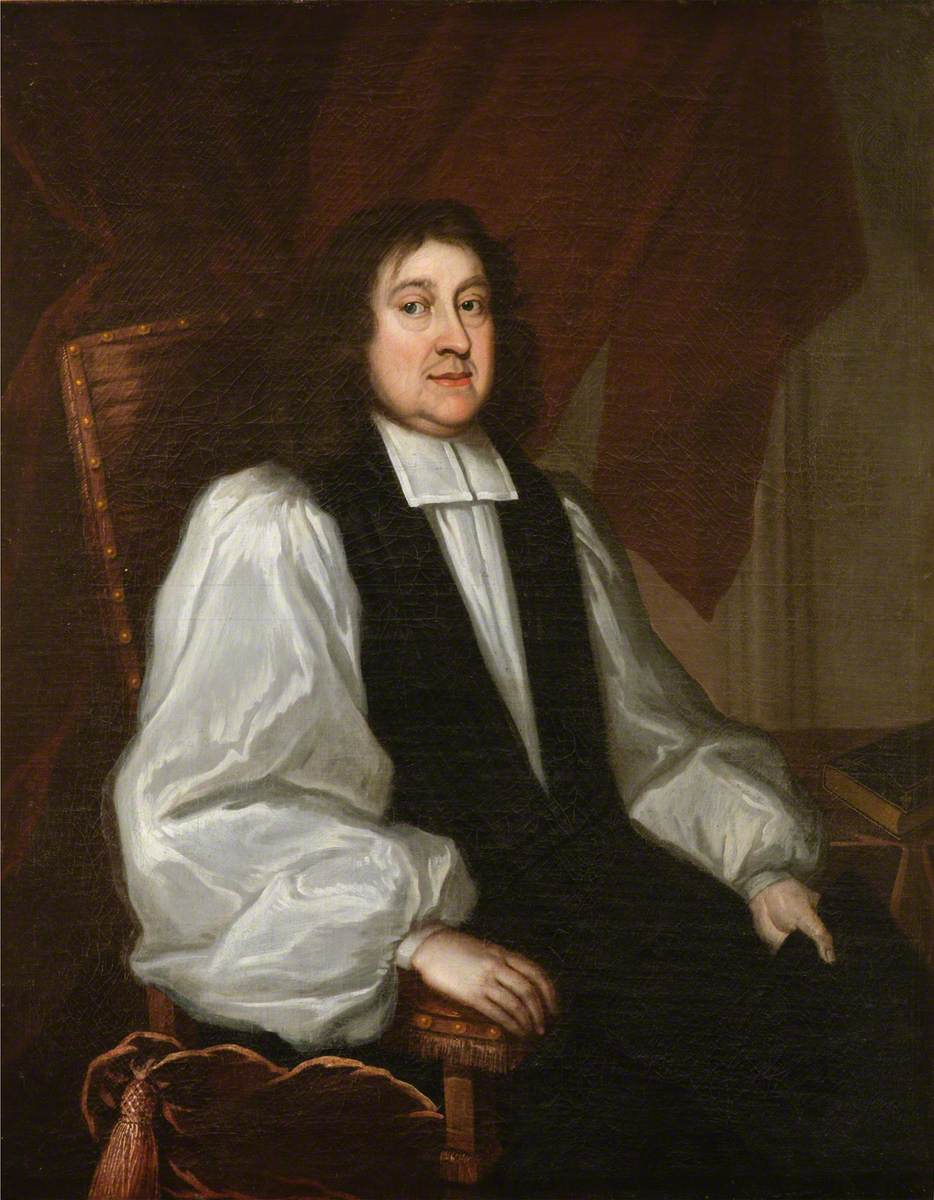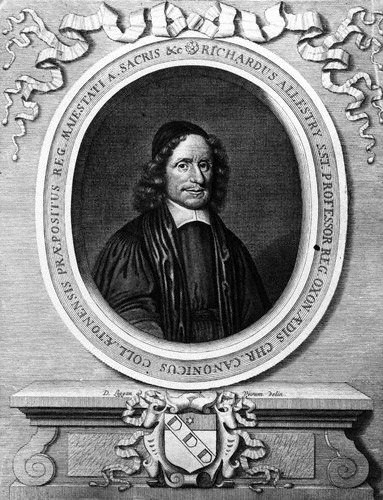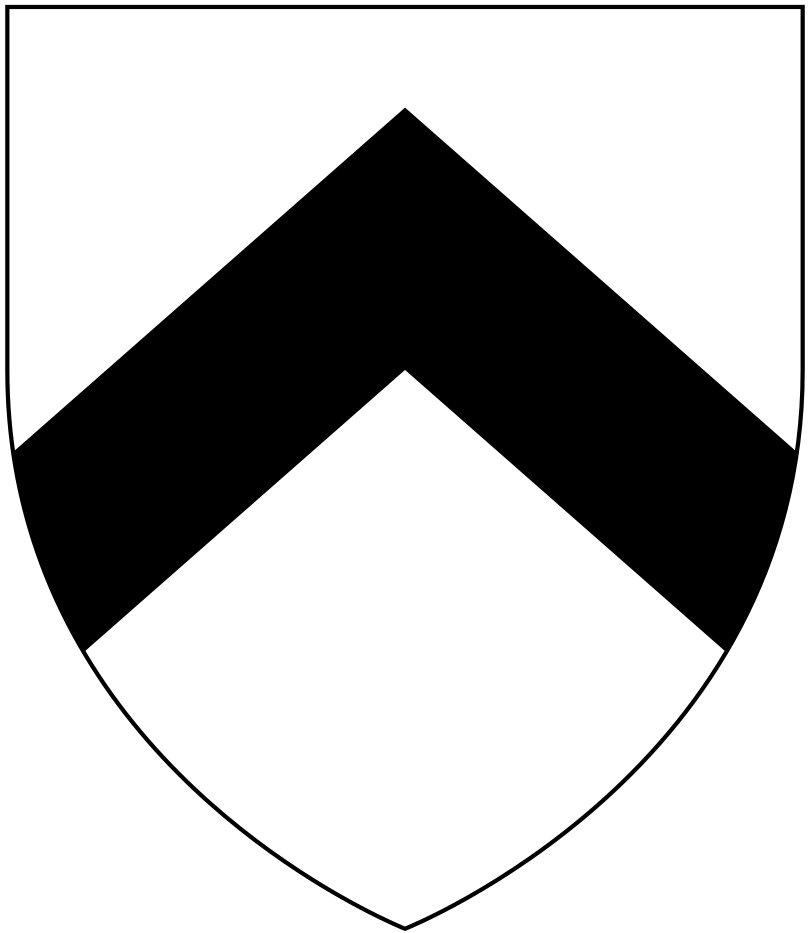|
William Jane
William Jane (1645–1707) was an English academic and clergyman, Regius Professor of Divinity at Oxford from 1680. Life The son of Joseph Jane, he was born at Liskeard, Cornwall, where he was baptised on 22 October 1645. He was educated at Westminster School, elected student of Christ Church, Oxford, in 1660, and graduated B.A. in June 1664, M.A. in 1667, and D.D. in November 1674. After his ordination he was appointed lecturer at Carfax Church, Oxford. He attracted the notice of Henry Compton, who became canon of Christ Church in 1669, and when Compton was created bishop of Oxford in 1674 he chose Jane to preach the sermon at his consecration, and appointed him one of his chaplains. In 1678 he was made canon of Christ Church, and was further presented by Compton, then bishop of London, to the rectory of Wennington, Essex. In 1679 the prebendal stall of Chamberlainswood in St. Paul's Cathedral and the archdeaconry of Middlesex were conferred on him. In May 1680 he was made re ... [...More Info...] [...Related Items...] OR: [Wikipedia] [Google] [Baidu] |
Gilbert Burnet
Gilbert Burnet (18 September 1643 – 17 March 1715) was a Scottish philosopher and historian, and Bishop of Salisbury. He was fluent in Dutch, French, Latin, Greek, and Hebrew. Burnet was highly respected as a cleric, a preacher, an academic, a writer and a historian. He was always closely associated with the Whig party, and was one of the few close friends in whom King William III confided. Early life: 1643–1674 Burnet was born at Edinburgh, Scotland, in 1643, the son of Robert Burnet, Lord Crimond, a Royalist and Episcopalian lawyer, who became a judge of the Court of Session, and of his second wife Rachel Johnston, daughter of James Johnston, and sister of Archibald Johnston of Warristoun, a leader of the Covenanters. His father was his first tutor until he began his studies at the University of Aberdeen, where he earned a Master of Arts in Philosophy at the age of thirteen. He studied law briefly before changing to theology. He did not enter into the ministry at that ... [...More Info...] [...Related Items...] OR: [Wikipedia] [Google] [Baidu] |
John Potter (archbishop)
John Potter (c. 167410 October 1747) was Archbishop of Canterbury (1737–1747). Life He was the son of a linen draper at Wakefield, Yorkshire. At the age of fourteen he entered University College, Oxford, and in 1693 he published notes on Plutarch's ''De audiendis poetis'' and Basil's ''Oratio ad juvenes''. In 1694 he was elected fellow of Lincoln College, Oxford and in 1697 his edition of ''Lycophron'' appeared. It was followed by his ''Archaeologia graeca'' (2 vols. 8vo, 1697–1698), the popularity of which endured till the advent of Dr William Smith's dictionaries. A reprint of his ''Lycophron'' in 1702 was dedicated to Graevius, and the ''Antiquities'' was afterwards published in Latin in the ''Thesaurus of Gronovius''. Besides holding several livings he became, in 1704, chaplain to Archbishop Tenison, and shortly afterwards was made Chaplain-in-Ordinary to Queen Anne. From 1708 he was Regius Professor of Divinity and canon of Christ Church Cathedral, Oxford. He marr ... [...More Info...] [...Related Items...] OR: [Wikipedia] [Google] [Baidu] |
Richard Allestree
Richard Allestree or Allestry ( ; 1621/22 – 28 January 1681) was an English Royalist churchman and provost of Eton College from 1665. Life The son of Robert Allestree, descended from an old Derbyshire family, he was born at Uppington in Shropshire. Although John Fell gave his birth date as March 1619, this conflicts with his college records. He was educated at Coventry and later at Christ Church, Oxford, under Richard Busby. He entered as a commoner in 1636, matriculating as a student on 17 February 1637 aged fifteen, and took the degree of B.A. in 1640 and that of M.A. in 1643. In 1642 he joined the king's army, under Sir John Byron. When the parliamentary forces arrived in Oxford, he hid the Christ Church valuables, and the soldiers found nothing in the treasury "except a single groat and a halter at the bottom of a large iron chest". Allestree escaped severe punishment only because the army hastily retreated from the town. He was present at the Battle of Edgehill in Oc ... [...More Info...] [...Related Items...] OR: [Wikipedia] [Google] [Baidu] |
Exeter Cathedral
Exeter Cathedral, properly known as the Cathedral Church of Saint Peter in Exeter, is an Anglican cathedral, and the seat of the Bishop of Exeter, in the city of Exeter, Devon, in South West England. The present building was complete by about 1400, and has several notable features, including an early set of misericords, an astronomical clock and the longest uninterrupted medieval stone vaulted ceiling in the world. History The founding of the cathedral at Exeter, dedicated to Saint Peter, dates from 1050, when the seat of the bishop of Devon and Cornwall was transferred from Crediton because of a fear of sea-raids. A Saxon minster already existing within the town (and dedicated to Saint Mary and Saint Peter) was used by Leofric as his seat, but services were often held out of doors, close to the site of the present cathedral building. In 1107 William Warelwast was appointed to the see, and this was the catalyst for the building of a new cathedral in the Norman style. Its ... [...More Info...] [...Related Items...] OR: [Wikipedia] [Google] [Baidu] |
Sir Jonathan Trelawny, 3rd Baronet
Sir Jonathan Trelawny, 3rd Baronet (24 March 1650 – 19 July 1721) was an English Bishop of Bristol, Bishop of Exeter and Bishop of Winchester. Trelawny is best known for his role in the events leading up to the Glorious Revolution which are sometimes believed to be referenced in the Cornish anthem "The Song of the Western Men". Life He was born at Trelawne in the parish of Pelynt, Cornwall, the eldest surviving son of Sir Jonathan Trelawny, 2nd Baronet and Mary Seymour, daughter of Sir Edward Seymour, 2nd Baronet. He was educated at Westminster School and then went to Christ Church, Oxford at the start of the Michaelmas term of 1668 where he distinguished himself as a scholar. A staunch royalist, he was ordained in 1673 and became a beneficed clergyman. He was appointed rector of South Hill on 4 October and of St. Ives on 12 December 1677, becoming Bishop of Bristol in 1685. He was one of the Seven Bishops tried for seditious libel under James II. Trelawny and the other b ... [...More Info...] [...Related Items...] OR: [Wikipedia] [Google] [Baidu] |
George Smalridge
George Smalridge (''alias'' Smallridge; 18 May 1662 – 27 September 1719) was Bishop of Bristol (1714–1719). Life Smalridge was born at Lichfield, son of the Sheriff of Lichfield Thomas Smalridge, George received his early education, this being completed at Westminster School and at Christ Church, Oxford. His political opinions were largely modelled on those of his friend Francis Atterbury, with whom he was associated at Oxford and elsewhere. After being a tutor at Christ Church, he was minister of two chapels in London, and for six or seven years he acted as deputy for William Jane, the regius professor of divinity at Oxford; his Jacobite opinions, however, prevented him from securing this position when it fell vacant in 1707. In 1711, he was made dean of Carlisle Cathedral and canon of Christ Church, and in 1713 he succeeded Atterbury as dean of Christ Church. In the following year he was appointed bishop of Bristol, but retained his deanery. In 1715 Smalridge refused ... [...More Info...] [...Related Items...] OR: [Wikipedia] [Google] [Baidu] |
Francis Atterbury
Francis Atterbury (6 March 1663 – 22 February 1732) was an English man of letters, politician and bishop. A High Church Tory and Jacobite, he gained patronage under Queen Anne, but was mistrusted by the Hanoverian Whig ministries, and banished for communicating with the Old Pretender in the Atterbury Plot. He was a noted wit and a gifted preacher. Early life He was born at Middleton, Milton Keynes, in Buckinghamshire, where his father was rector. He was educated at Westminster School and Christ Church, Oxford, where he became a tutor. In 1682, he published a translation of ''Absalom and Achitophel'' into Latin verse with neither the style nor the versification typical of the Augustan age. In English composition he met greater success; in 1687 he published ''An Answer to some Considerations, the Spirit of Martin Luther and the Original of the Reformation'', a reply to Obadiah Walker, who, when elected master of University College, Oxford, in 1676, had printed in a press ... [...More Info...] [...Related Items...] OR: [Wikipedia] [Google] [Baidu] |
Anne, Queen Of Great Britain
Anne (6 February 1665 – 1 August 1714) was Queen of England, Scotland and Ireland from 8 March 1702 until 1 May 1707. On 1 May 1707, under the Acts of Union, the kingdoms of England and Scotland united as a single sovereign state known as Great Britain. Anne continued to reign as Queen of Great Britain and Ireland until her death. Anne was born in the reign of Charles II to his younger brother and heir presumptive, James, whose suspected Roman Catholicism was unpopular in England. On Charles's instructions, Anne and her elder sister Mary were raised as Anglicans. Mary married their Dutch Protestant cousin, William III of Orange, in 1677, and Anne married Prince George of Denmark in 1683. On Charles's death in 1685, James succeeded to the throne, but just three years later he was deposed in the Glorious Revolution of 1688. Mary and William became joint monarchs. Although the sisters had been close, disagreements over Anne's finances, status, and choice of acquaintances ar ... [...More Info...] [...Related Items...] OR: [Wikipedia] [Google] [Baidu] |
Thomas Gilbert (minister)
Thomas Gilbert (1613–1694) was an English ejected minister of the seventeenth century. Biography Thomas Gilbert, son of William Gilbert of Prees, Shropshire, was born in 1613. In 1629 he became a student in St Edmund Hall, Oxford, his tutor being Ralph Morhall. After graduating B.A. on 28 May 1633, he obtained some employment in Ireland, but returned to Oxford and graduated M.A. on 7 November 1638. Through the favour of Philip, fourth baron Wharton, he obtained the vicarage of Upper Winchendon, Buckinghamshire, and (about 1644) the vicarage of St Laurence's Church, Reading, Berkshire, when he took the covenant. He sided with the Independents, according to Tanner (a statement which seems questionable, according to the Dictionary of National Biography), and was created B.D. on 19 May 1648 at the parliamentary visitation of Oxford. About the same time he exchanged his cure at Reading for the rectory of Edgmond, Shropshire. Tanner says he was appointed in the room of an ejected roy ... [...More Info...] [...Related Items...] OR: [Wikipedia] [Google] [Baidu] |
Association Of 1696
The Association was an instrument created after the failed Jacobite assassination plot of 1696 to pledge loyalty to William III of England. Modelled by Lord Somers on the Elizabethan Bond of Association, it placed intense pressure on nonresistant Tories in public life to acknowledge William as "rightful and lawful King". The Association was widely subscribed to by the public, extending well beyond the circle of officials Somers had targeted, and soon assumed the force of law, all Crown officials being required by statute to subscribe to it. Some Tories were purged from office for failure to do so, and the Association remained in legal force until 1702, when William's death rendered it a nullity and the requirement to subscribe to it was repealed. Background While High Tories opposed to James II of England's religious policies played an important role in the Glorious Revolution, many had uneasy consciences over the events that followed. The legal fiction in the Bill of Rights 1689 ... [...More Info...] [...Related Items...] OR: [Wikipedia] [Google] [Baidu] |
Arthur Bury
Arthur Bury, D.D. (1624-1714?) was an English college head and Anglican theologian of controversial views. His 1690 antitrinitarian work, ''The Naked Gospel'', first published anonymously, was commanded to be burnt at Oxford, and, in a complex sequence of events involving legal action, Bury lost his position as Rector of Exeter College, Oxford after being expelled initially in 1689. William Prideaux Courtney in the ''Dictionary of National Biography'' stated that "His object was to free the gospel from the additions and corruptions of later ages, and he sums up its doctrines 'in two precepts—believe and repent.'" :s:Bury, Arthur (DNB00) Jonathan Israel characterizes Bury as a "crypto-Socinian"; he is now often claimed as a Unitarian sympathizer, with a strong interest in the monotheism of Islam. Bury was in fact in the tradition of latitudinarianism and Protestant irenicism, and the early Unitarian Thomas Firmin had a hand in the publication, which suggested that a minimal set ... [...More Info...] [...Related Items...] OR: [Wikipedia] [Google] [Baidu] |





